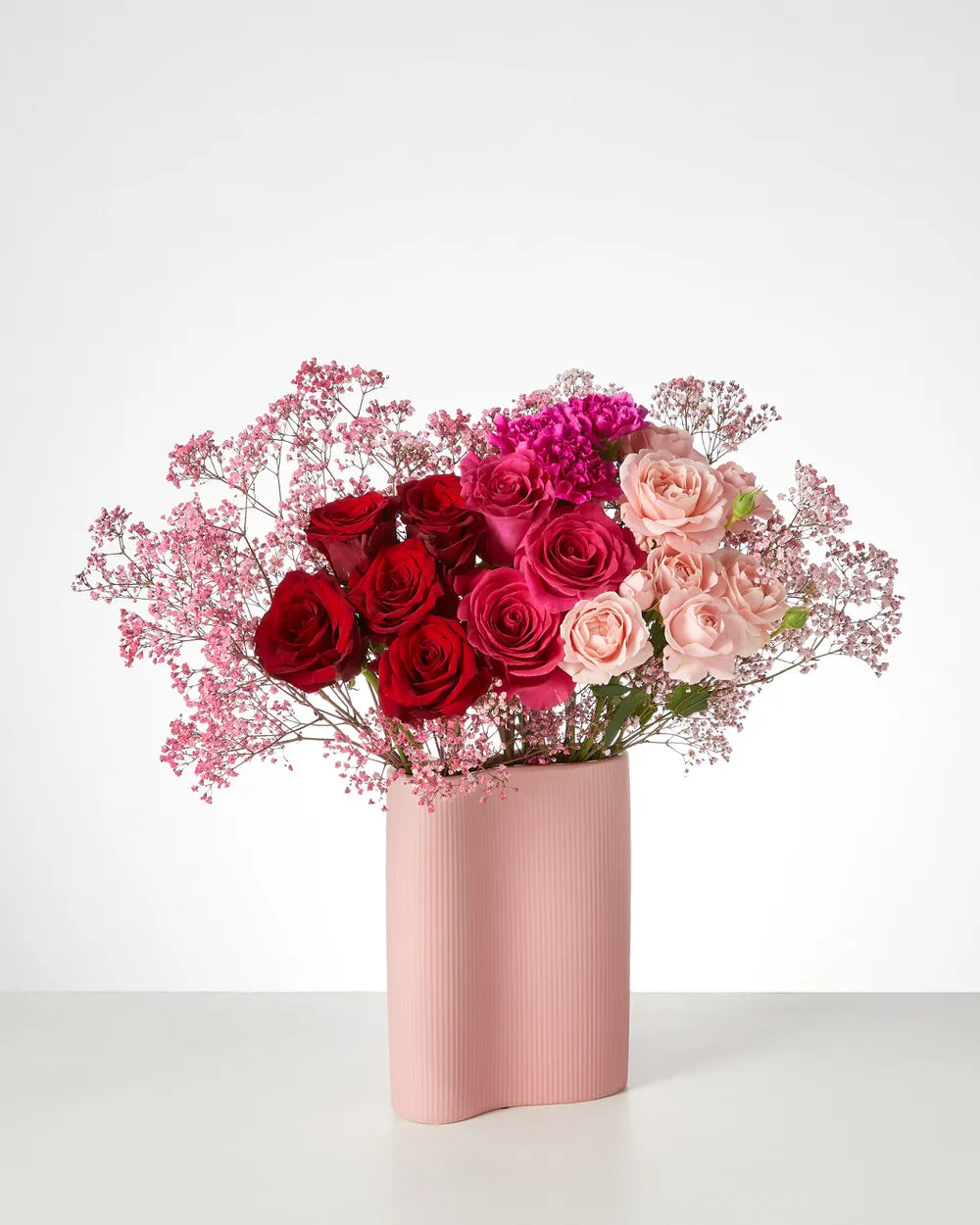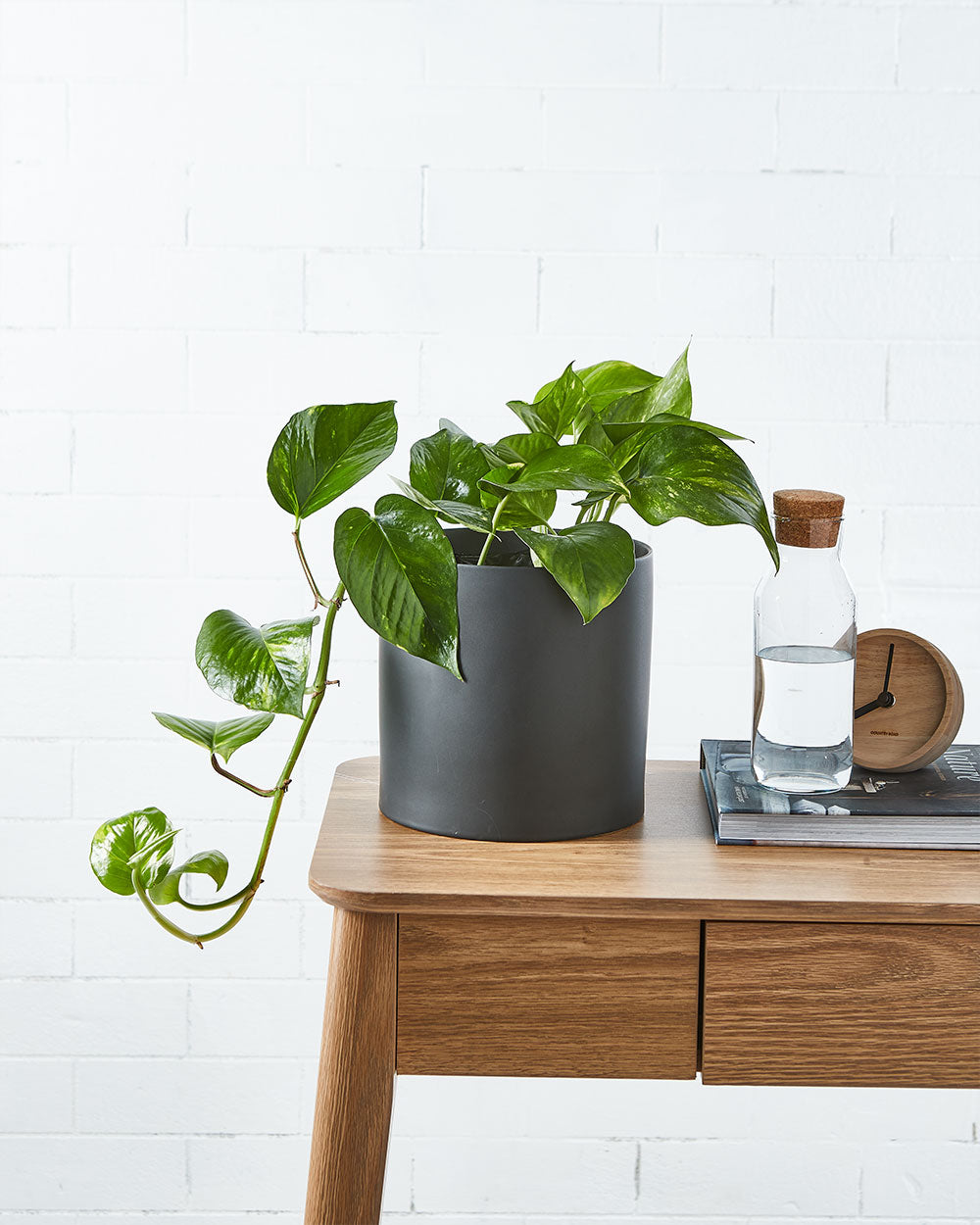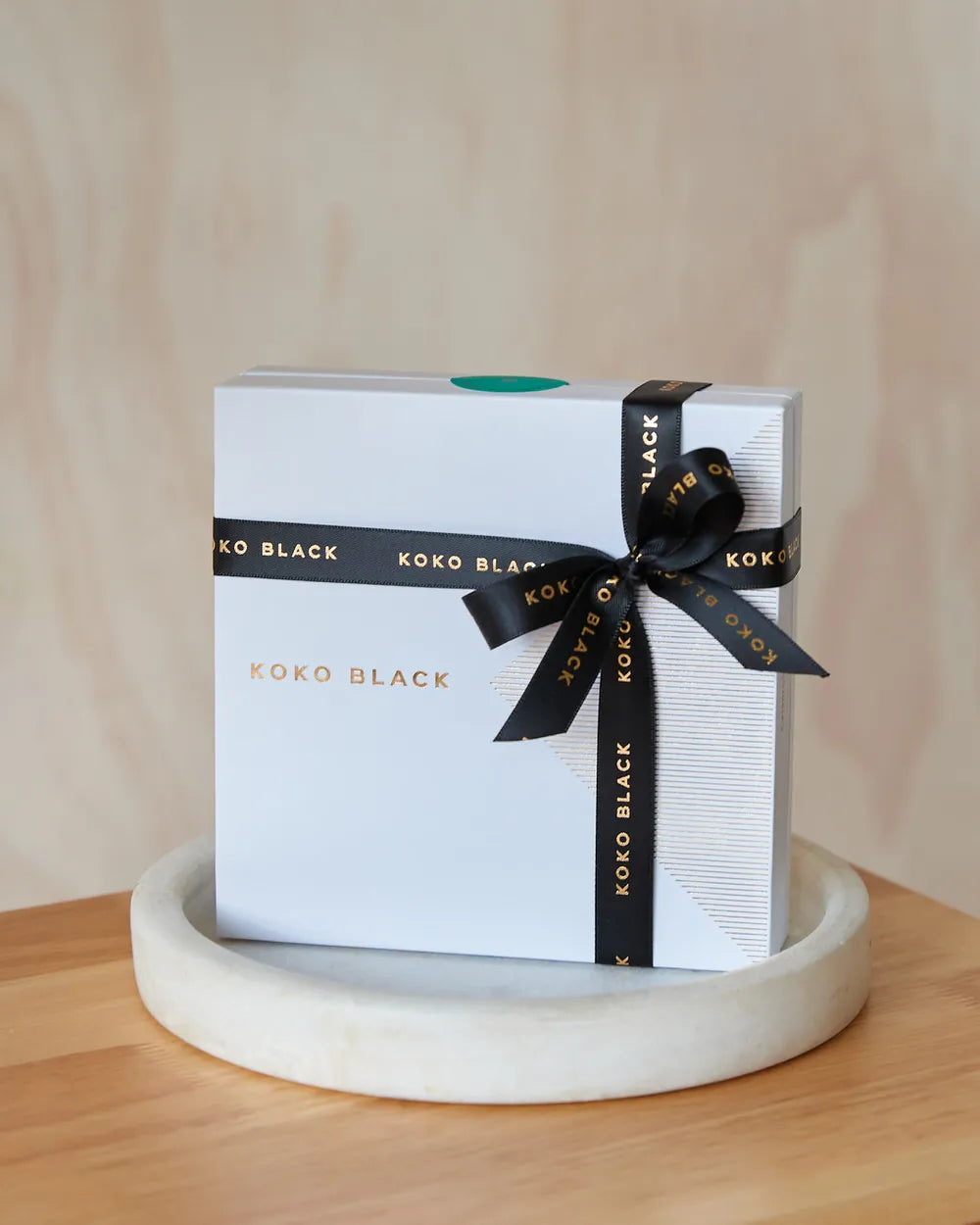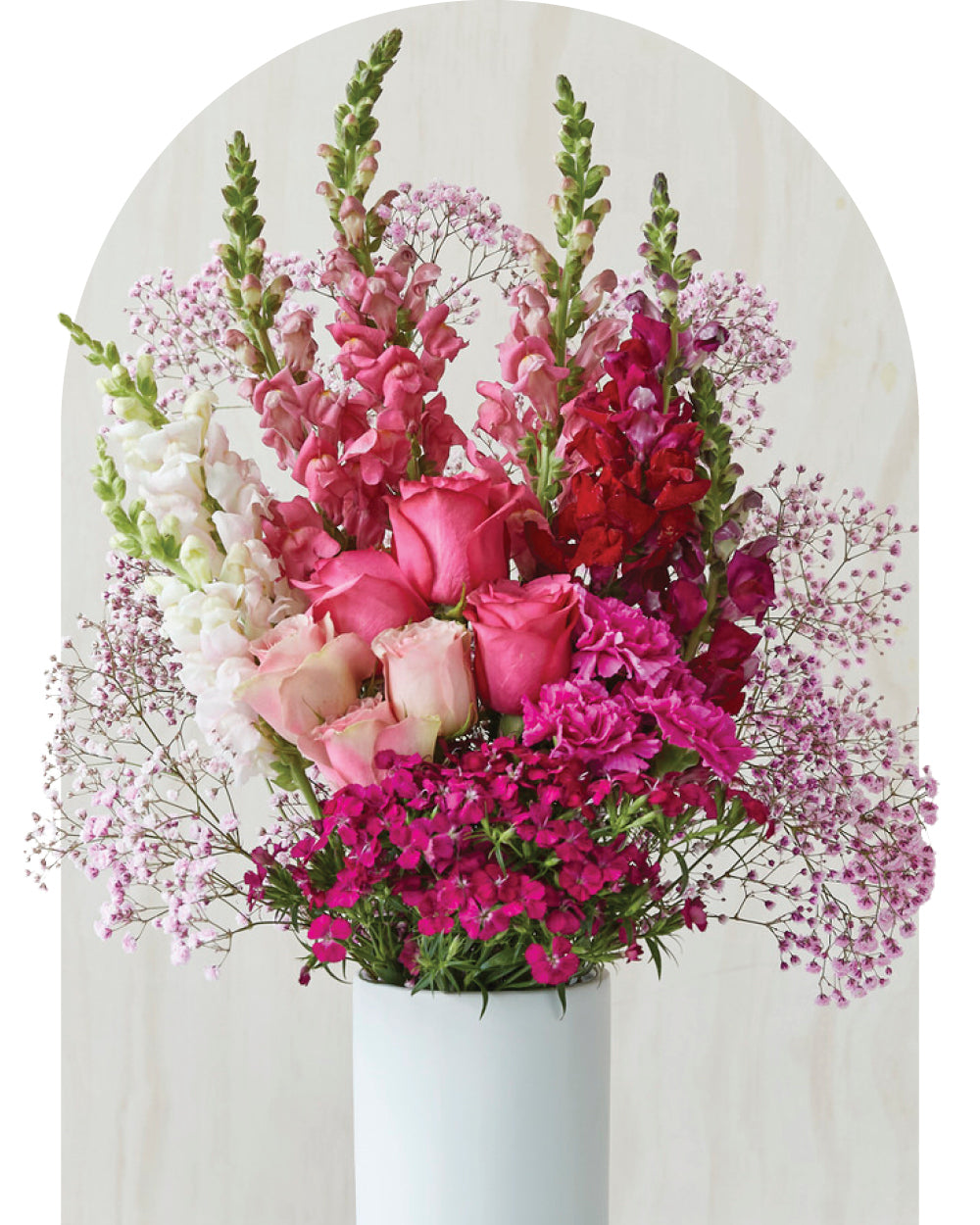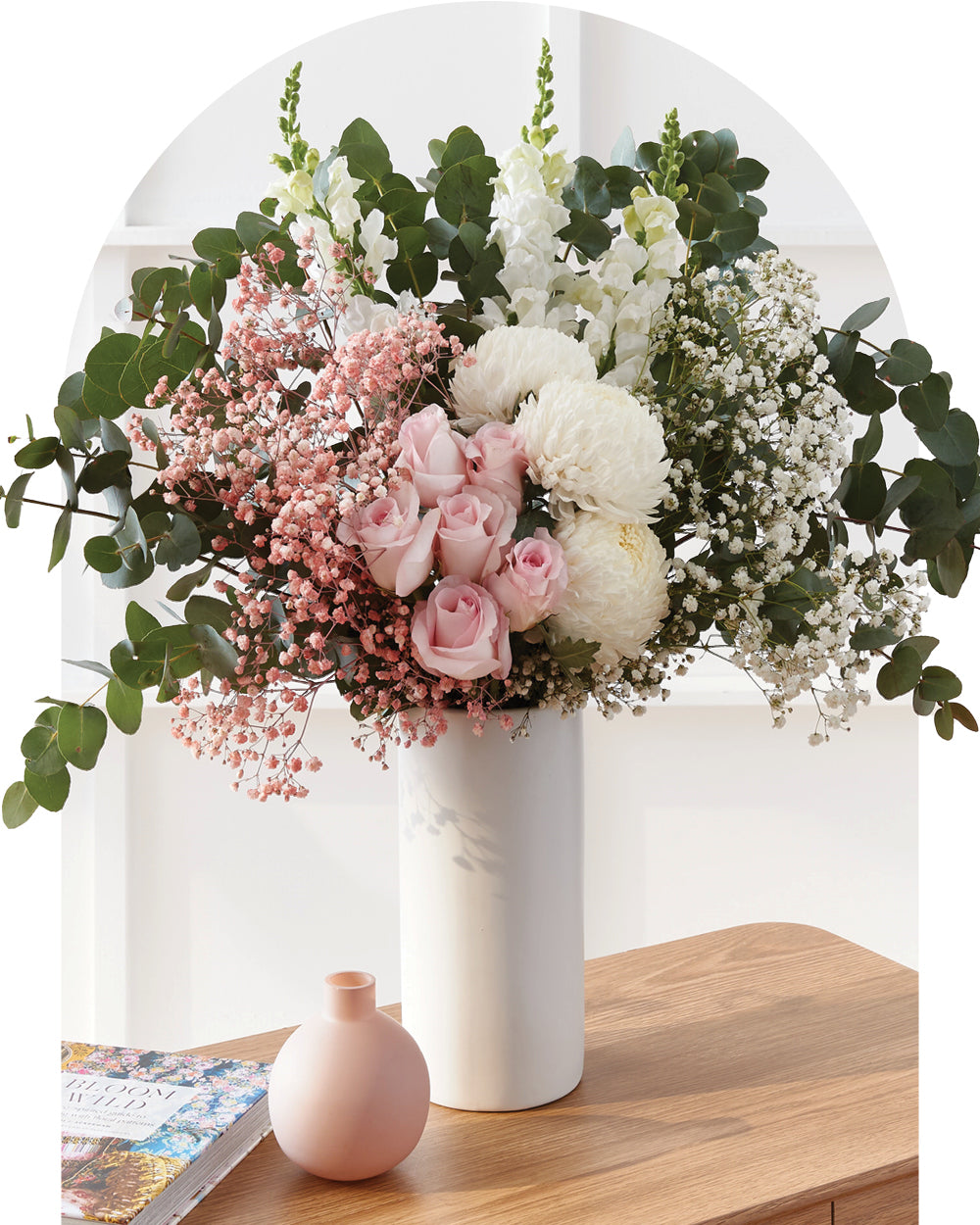Rubber plants, or Ficus Elastica, are generally very low maintenance plants. With just a little bit of love and care, they’ll live very happily in your home. Yet no matter how experienced you are as a plant parent, the following common rubber plant problems can occasionally arise.
Thankfully, these common rubber plant problems are often easily reversible, especially if you catch them quickly! We’ve rounded up our top tips to answer your most asked questions so that you can diagnose your rubber plant problems and solve them as soon as possible.

Common rubber plant problems
What is wrong with my rubber tree plant?
A healthy rubber plant will happily boast beautiful, glossy, deep emerald green leaves. They’re an extremely fast-growing plant, so you’ll also know if your plant is healthy if it shoots up dramatically during its growing season!Generally speaking, you should be able to tell quite quickly if there’s something up with your plant. Have leaves that are yellowing or browning? Are the leaves looking sad and wilted? Is your plant turning black in some areas? These are all common rubber plant problems and signs that your rubber plant isn’t having the best time in its current environment. Find out how to fix these problems below!
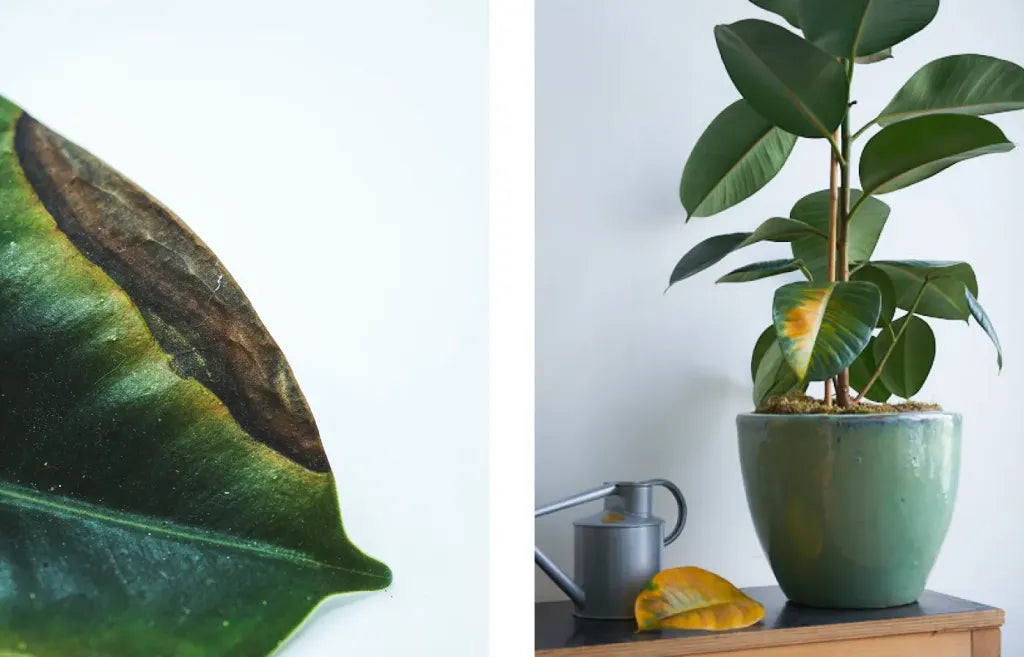
Why are my rubber plant leaves curling?
If the leaves are starting to curl on your rubber plant, it’s time to get down and dirty with the soil! Both over and under watering are the cause of this problem, so you’ll need to assess your watering schedule. You should be allowing the soil to almost dry completely between waterings, and then water it heavily until you see it trickling through the drainage holes in the bottom of the plant pot.
Curling leaves could also be due to low humidity. If you’re suffering with dry indoor air, up the moisture with a mister or humidifier to give your plants the more sauna-like atmosphere they’re after!
Why are my rubber plant leaves turning yellow?
Similarly, you can thank improper watering for any yellowing leaves on your plant. Typically you’ll find these paler leaves on overwatered rubber plants, so make sure you’re not topping up the moisture too often. Your plant will only need a new drink once the top few inches of soil have dried out, and you should never leave the soil completely sodden.
What causes brown spots on rubber plant leaves?
You might expect brown spots on leaves to be due to underwatering or sunburn. You would be correct for many other houseplants, but with rubber plants this is actually rarely due to a dry plant. More frequently, brown spots are a good sign that you’ve been overwatering the plant! If you think you’re giving it the right amount of water, make sure your pot has sufficient drainage holes, so that the soil doesn’t become waterlogged.
Should I cut the brown leaves off a rubber plant?
While you can remedy the brown leaf situation and prevent it from happening to future leaves, you can’t revive the brown spots themselves. These areas can be snipped to restore the plant back to its fully green glory. You don’t need to chop off the whole leaf, as these partial leaves will continue to create energy for the plant.

How do you fix an overwatered rubber plant?
To right the wrongs of an overwatered rubber plant, you need to immediately put down the watering can! Let the soil dry out almost completely before watering again. The solution could be as simple as that. If root rot has set in, however, you need to remove the plant from its current soil and repot it. You should start to see some indication of recovery within around a week to 10 days.
Once you’ve solved the problem, simply make sure that you only water the plant when it needs it. And always remember that rubber plants are pretty resilient when it comes to drier conditions, so it’s always better to err on the side of underwatering.
Why are my rubber plant leaves turning black?
If your leaves are turning black, it could be due to a number of reasons. Rubber plants aren’t typically afflicted with diseases or bothered by pests, but it can happen! Black spots may be due to mould, bacterial infections, fungi or even viral diseases.
More often than not, though, it will be due to overwatering that has led to root rot. Black spots are often accompanied by wilting leaves, slow growth and mushy roots if this is the case. This severe level of overwatering means that the soil has become oversaturated because it hasn’t been able to drain properly. This means that the roots are not able to breathe and therefore literally begin rotting away.
But don’t panic – you can save your plant from root rot! Trim off the damaged leaves, remove the plant from its pot, and dispose of the existing soil. Snip off the roots that have become mushy, and allow other weak roots to fall off themselves. You’ll then want to use a rubber plant-safe fungicide treatment on the roots, before leaving your plant to air out of the pot for a whole day. You can then repot your rubber plant into a pot with new soil and good drainage holes, to prevent it from happening again!
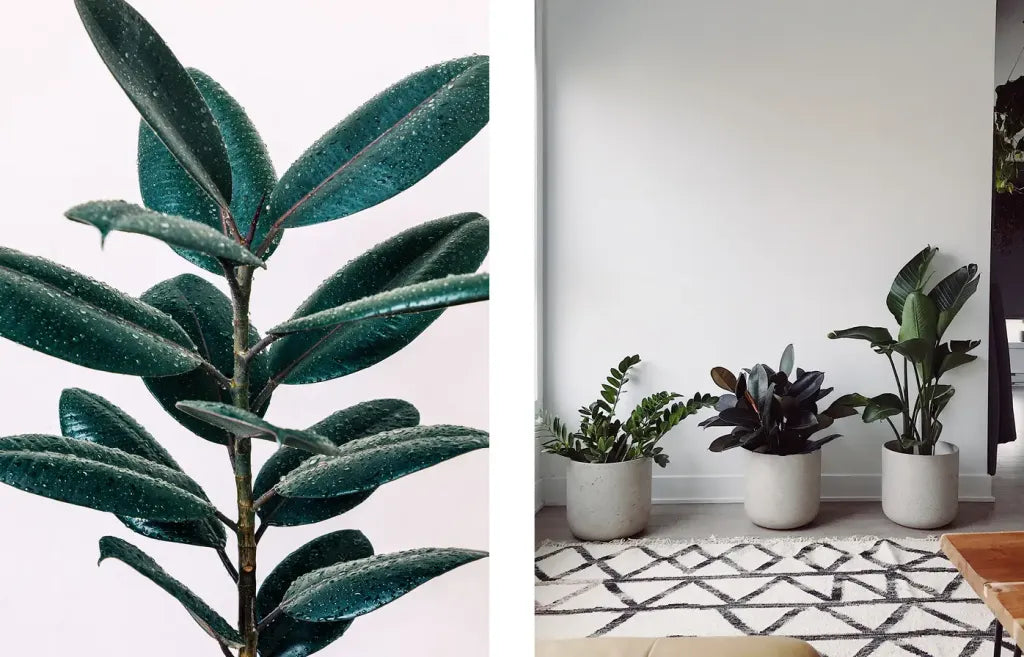
How do you straighten a rubber plant?
Rubber plants, like many other houseplants, are sun worshippers! They’ll stretch to reach sunny spots where they can absorb the sun’s rays. If your rubber plant is looking a bit leggy, you might want to move it to a spot where it doesn’t have to try so hard to get its sun fix. Once repositioned, make sure to rotate your plant frequently to encourage even growth on all sides.
Bring your rubber plant back to life!
With these handy tips, the most common rubber plant problems should be solved in just a couple of weeks! Need some more help with houseplant care? Check out our blog for top tips and easy solutions for your green friends.




